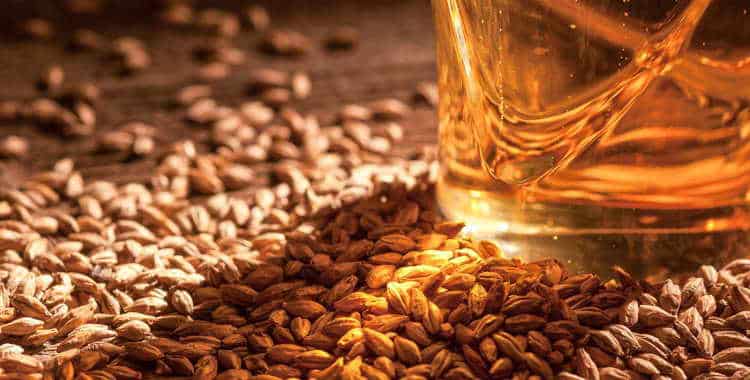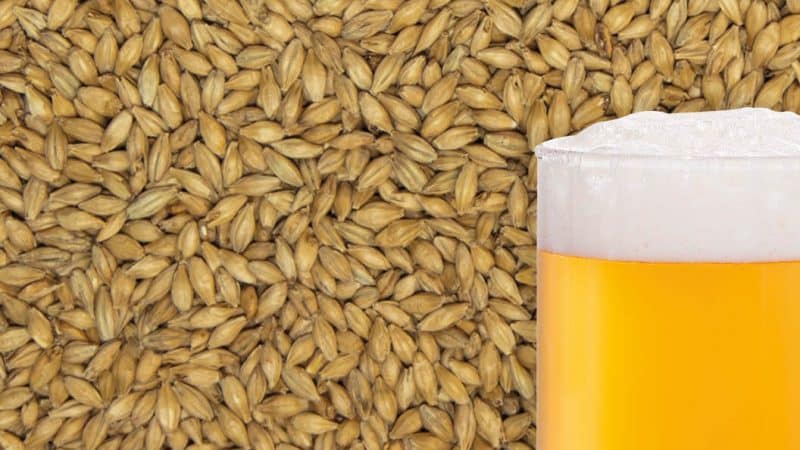How to make malt from barley at home
You can talk as much as you like about the dangers of alcohol, but it’s hard to imagine a holiday table in our country without such drinks. Doctors do not deny that alcohol in small doses is even beneficial. However, it is problematic to purchase quality products: even expensive drinks with bright labels from well-known brands are often counterfeit.
Therefore, many connoisseurs of alcoholic beverages prefer to prepare them themselves, at home. The law does not prohibit the production of alcohol for independent use, and you can prepare not only strong moonshine or whiskey, but also homemade beer. When preparing it, the question will inevitably arise about where to get the malt. Barley malt can be made at home.
What is malt
To prepare any alcohol, a fermentation process is used, which occurs when yeast combines with sugar. It has long been used in the preparation of mash, from which the well-known moonshine is obtained by distillation.
Using pure sugar makes this process prohibitively expensive. It is much cheaper to use starch found in cereals, which also contains sugar components. However, these are complex polysaccharides that do not cause fermentation. Malting enthusiasts joke that yeast cannot chew starch. That is, sugar enzymes are blocked by other components.
There is a need to isolate pure sugar from grain starch in order to make it a monosaccharide suitable for fermentation. To do this, cereal grains are boiled directly with malt. This is how whiskey is prepared at home and industrially.
Malt is necessary in the production of beer. In addition to participating in the chemical process, it gives drinks a unique taste that distinguishes varieties depending on the type of raw material.

Important! Malt is a powder obtained from artificially sprouted cereals of various types. It contains enzymes that can decompose polysaccharides into monosaccharides, that is, extract sugar from grain starch. The sprouted grains themselves are also called malt.
Germinate the seeds wheat, rye, oats and even corn, but the highest quality alcoholic drinks are those prepared using barley malt. They have a unique taste and color.
Malt is widely used in the production of bread and kvass. Wheat white bread is prepared with light malt, and dark malt is used when baking rye and black bread.
Advantages and disadvantages of barley malt
Malt made from barley is called light or white. Its use in the fermentation process provides several advantages:
- availability of raw materials - grain or malt itself can be freely purchased in any region of Russia;
- the relative cheapness of malt compared to sugar;
- ease of storage;
- barley malt gives beer its characteristic taste and aroma;
- a necessary component in the production of various types of whiskey, especially strong ones, obtained from a mixture of dark and light malt (from wheat and barley);
- According to the rules, malt must be sifted - due to its fine consistency, barley malt sifts much faster and better than dark malt.
Barley malt also has disadvantages:
- when using low-quality grain, mold develops in the powder, significantly impairing the taste and smell of products prepared on its basis;
- During storage, malt requires periodic ventilation; if this condition is not met, the grains acquire a characteristic cucumber smell.
Algorithm of actions during preparation

The quality of malt directly depends on the quality of the grain and the time of its germination. Barley germinates for 9-10 days, and rye for 5-6.
Grain selection
Pay attention to the following grain characteristics:
- You should not use freshly collected seeds, they have poor germination;
- the ideal age of malted grain is from 2 months to a year;
- the grains must be fully ripe, indicators of such ripeness are light yellow color and characteristic heaviness;
- inside, healthy barley seeds are white and loose;
- When immersed in water, healthy grains drown.
Selected grains are checked for germination. To do this, wrap 100 pieces in a soft, damp cloth. and place on a saucer. After 3 days they should sprout. The germination rate of 90% is considered standard and suitable for production, that is, 90-92 grains should germinate.
Cleansing
To begin with, the grain is cleaned:
- the seeds are sifted through a large sieve to remove stones, debris, remains of dry soil and clay;
- Magnets are used to remove possible metallic impurities;
- the grains are washed in hot water several times;
- Complete the cleaning if there is no characteristic turbidity in the drained water.
Soak
The grains are filled with water and left for 6-8 hours. A more complex method is also used: the grains are left in water for a day, and the water is changed every 6 hours.
The grains obtained in this way already have hints of a sprout, their skin is easily separated from the pulp.Additionally, it is recommended to disinfect the grains in a weak solution of potassium permanganate.
Germination
Sequencing:
- after soaking in a wet state, the grains are laid out along the bottom of a tray or box, the layer thickness should not exceed 5 cm;
- the container is covered with cotton cloth to prevent rapid evaporation of moisture;
- the temperature is maintained around +15°C;
- The grain is periodically thoroughly mixed.
In such conditions, the grain is left for about a week. During this time, the sprouted barley sprout should exceed the grain size by 1.5-2 times.
Necessary conditions for malting
The method of malting without watering was described above. But there is another method called pouring:
- the grain is immersed in a container with holes, for example, a metal double-sided sieve in a box;
- periodically water the barley with water from different sides of the sieve - from 2 to 5 times a day;
- For quick malting, warm heated water is used; for natural malting, normal temperature is used.
It is recommended to perform the procedure more often not only to speed up germination, but also to wash away harmful microbes that may appear on wet grain.
Barley watered with heated water can produce a full size sprout within 5 days. Under normal conditions, the process may take about a week.

Disinfection and aging of finished malt
Disinfection is carried out by dousing the finished sprouts with a solution of vodka or vinegar. You can use a weak solution of potassium permanganate.
The grains are then dried. You can do this in the attic or using a fan heater. This must be done carefully. If moisture persists even in small amounts, mold may develop.
Important! If you find mold, you need to select and remove the affected grains, the remaining ones will be suitable for consumption.
If the sprouts are left in the raw material, they will impart an unpleasant flavor to the malt. Therefore, after drying they are removed. This can be done in 2 ways:
- Scroll the grains in the mixer - the dried sprouts will fly off first, then sift.
- Place the prepared grains in a bag and shake it vigorously - the effect will be the same.
The grain is kept to a moisture content of 2-5%, then ground into powder in a coffee grinder or blender.

Application and storage of malt
If you have made green malt without thorough drying, it must be crushed and used as a raw material for making the drink.
Green malt is poured with water to produce wort, to which regular wheat or barley is then added, as well as yeast for fermentation. To give drinks a variety of flavors and colors, malt obtained from different grains is mixed. The color of beer is especially rich when mixed with barley and rye grains.
Whiskey can be single malt or double malt. The latter option is stronger, but the first one cooks faster.
Storage
The cleaned malt is dried again to extend its shelf life.
Important! The drying temperature should not exceed 40°C, otherwise the beneficial enzymes of the malt will be destroyed.
Dried grains are more difficult to grind and can ruin your coffee grinder. Therefore, it is recommended to use a grain crusher.
The resulting powder is placed in glass jars, closed tightly and placed in a cool, dry place, free from direct sunlight.
Tips and tricks
When making malt at home, consider these important recommendations:
- the pale color of drinks is corrected by mixing varieties and adding rye malt;
- the taste of drinks made from green malt differs from the taste from dried malt;
- the higher the grade and quality of the barley, the better and richer the taste of the beer;
- Some amateurs successfully sprout grains in the refrigerator;
- if the grain exudes a whitish liquid, this means that it was overexposed during germination and is useless;
- husk on grains is a sign of poor quality cleaning;
- To disinfect grains, it is permissible to use mouthwash.
Read also:
Is it possible to pickle Zozulya cucumbers and how to do it correctly.
What is the calorie content of watermelon, and how is it beneficial for the human body.
Conclusion
The process of making malt with your own hands from barley is not as complicated as it seems at first. If you have the desire and care, you can germinate grains quickly and easily. And then begins an exciting, creative activity - preparing drinks at home, where you can give free rein to your imagination.